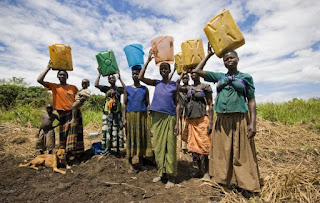Conclusions and Reflections

I have enjoyed learning about water and gender (I hope you have to), and although I have only scraped the surface, I hope I gave you enough InSite into water and development. My initial thought was that I hadn't showcased female happiness and that I had fallen into the trap of seeing African women as victims at the disappointment of Winanna . However, at closer look, I have shown how women can be agents of change with vital water knowledge that can boost Africa's development. I hope I have illustrated the importance of empowering women to become leaders in development and climate change. Policies and talks, such as the SDGs and COP27, are understanding not only gender inequalities but also the vital importance of women in leadership, giving us hope for the future. However, something echoed throughout my blog is the need for women to be empowered locally. If you had asked me at the start of this blog what would empower women, I would probably say infrastructure and policies;...

